
In 2021, U.S. phone users received more than 87 billion spam texts. These spam texts are annoying—and dangerous. Not only that, they’re frequently linked to scams. Spam text messages typically market a service or product you did not sign up to hear about. They become much more problematic when the text is a fake message attempting to scam you; most often for money.
The FTC reported that consumers lost $5.8 billion in 2021 due to these fake messages, an increase of 70% over 2020.
What’s the difference between spam and fake text messages?
Understanding how to identify a fake text message starts with knowing the difference between fake texts and spam texts, as they’re slightly different.
Spam text messages are any unwanted or unsolicited messages sent to your phone. Whether they come from a legitimate business or a scammer, if you did not sign up to receive these texts, they’re spam.
Meanwhile, fake text messages are texts that scammers send with the intent of deceiving the recipient into sharing their personal or financial information. They’re a type of spam text message in the sense that they are definitely unwanted texts.
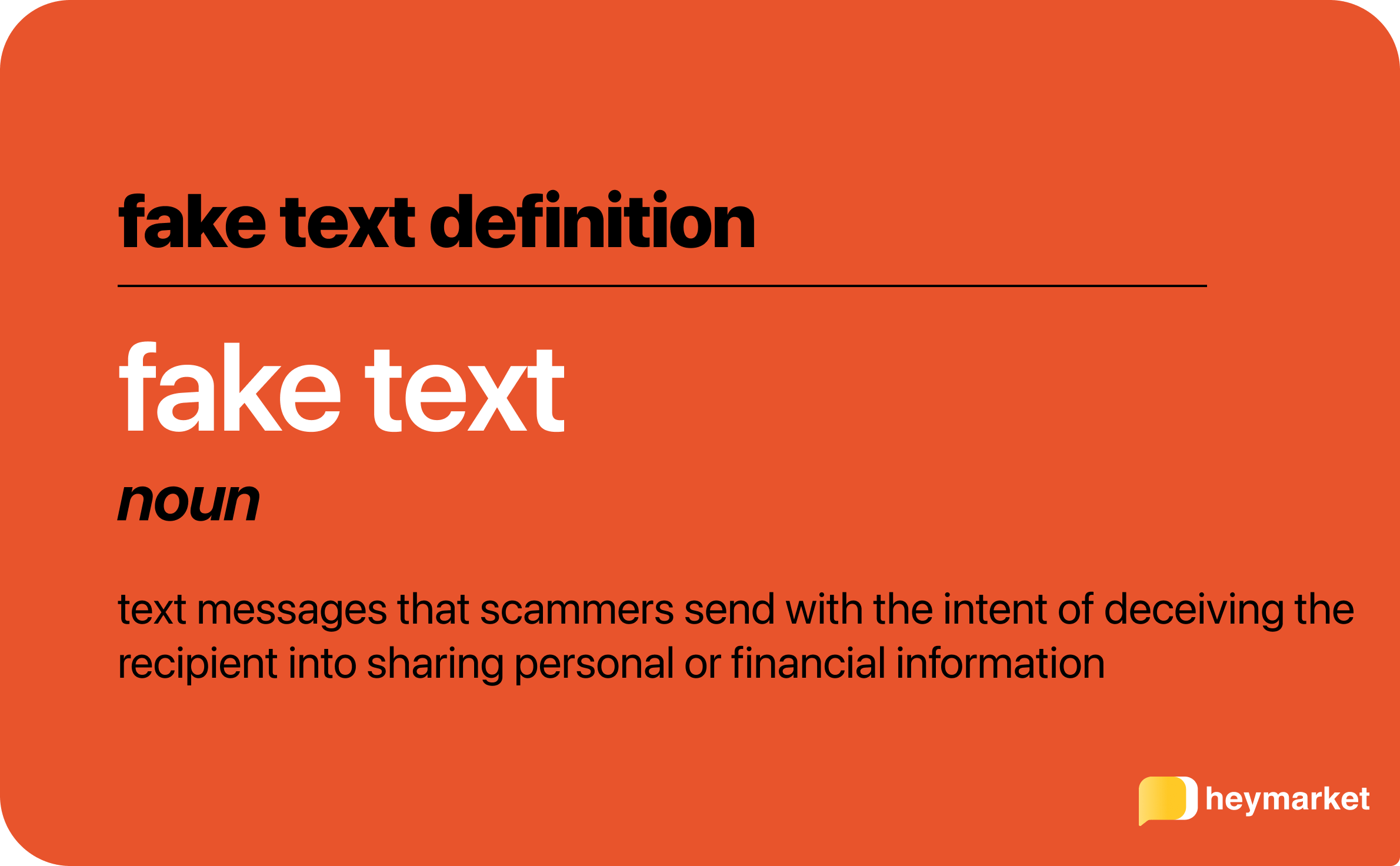
Fake text messages are a growing problem as messaging becomes more popular. Spammers have realized that texting is a trusted channel, which makes it easier to trick consumers into falling for their traps. But if you can identify which texts are fake, you’ll be able to stop reading right away and press delete.
In this guide, we’ll cover:
- Why you’re getting fake texts
- When they became common
- How to tell if a text is fake
- Fake spam text examples
- Steps to block fake text messages
Why Do People Get Fake Texts and Spam Texts?
Scammers send texts because they want to trick you into giving them critical data, from your passwords to your Social Security number. Then, they can empty your bank account—and, in some cases, steal your identity. This tactic of phishing through SMS messages is called “smishing.”
How did scammers get your number?
It’s not your fault that you’re getting unsolicited text messages.
Data breaches are growing more common as our technology advances and more people store personal or financial information online. There’s a chance that your phone number was compromised during one of these breaches, then sold by cybercriminals on the dark web, where scammers can purchase it. (The dark web refers to secret internet sites only accessible by people with specialized browsers. It’s a center of criminal activity.)
Scammers also frequent people search sites, which contain personal details from your phone number to your past home addresses. Old-school scammers may even pick through your trash to find your old bills.
When Did Fake Texts Become So Common?
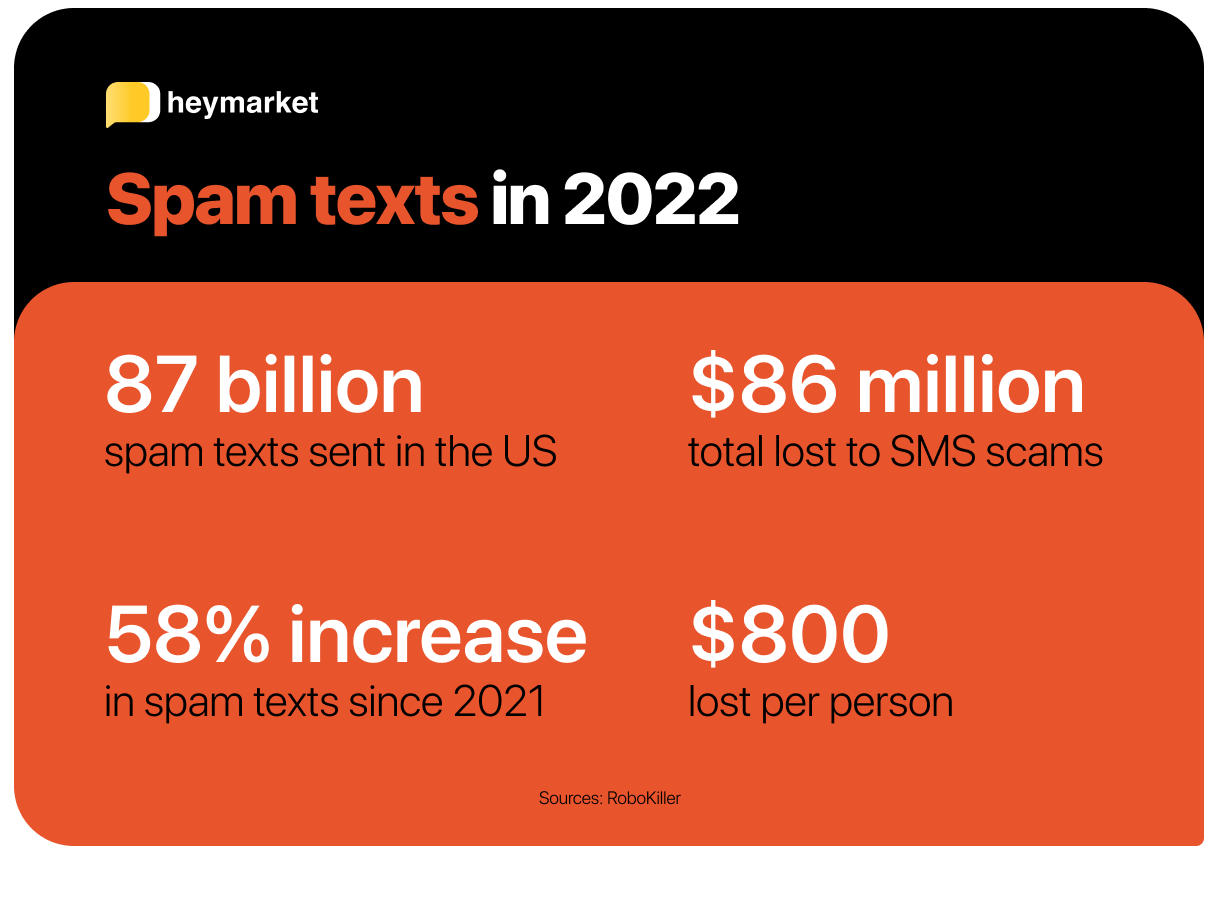
Fake texts weren’t a thing when text messaging was invented in 1984. But as soon as it grew more popular, scammers caught wind and dove in. Industry experts cite the early 2000s as the rise of text message scams. In fact, David Rayhawk coined the term smishing in 2006.
By the time 2012 rolled around, spam texts were enough of a problem for one government agency, the Federal Communications Commission, to take notice. In their 2012 rule change, they declared that texts were subject to regulations under the Telephone Consumer Protection Act (TCPA). They stated that businesses had to get consent from customers before messaging them.
Clearly, the problem didn’t go away. In 2018, the FCC ruled that carriers can block texts they identify as spam. As a result, carriers responded to increasing complaints of spam by creating A2P 10DLC registration requirements in 2019. In sum, businesses that want to text customers through a standard 10-digit number must register with carriers and state what they want to text consumers about. That makes it easier for carriers to determine which texters are actually spammers.
Today, we’re still receiving spam texts—but business texting platforms, carriers, and the government are working behind the scenes to figure out how to stop them.
Ways to Tell if a Text is Fake
There’s not a single definitive way to identify fake spam text messages. However, there are some common red flags that signal a fraudulent text:
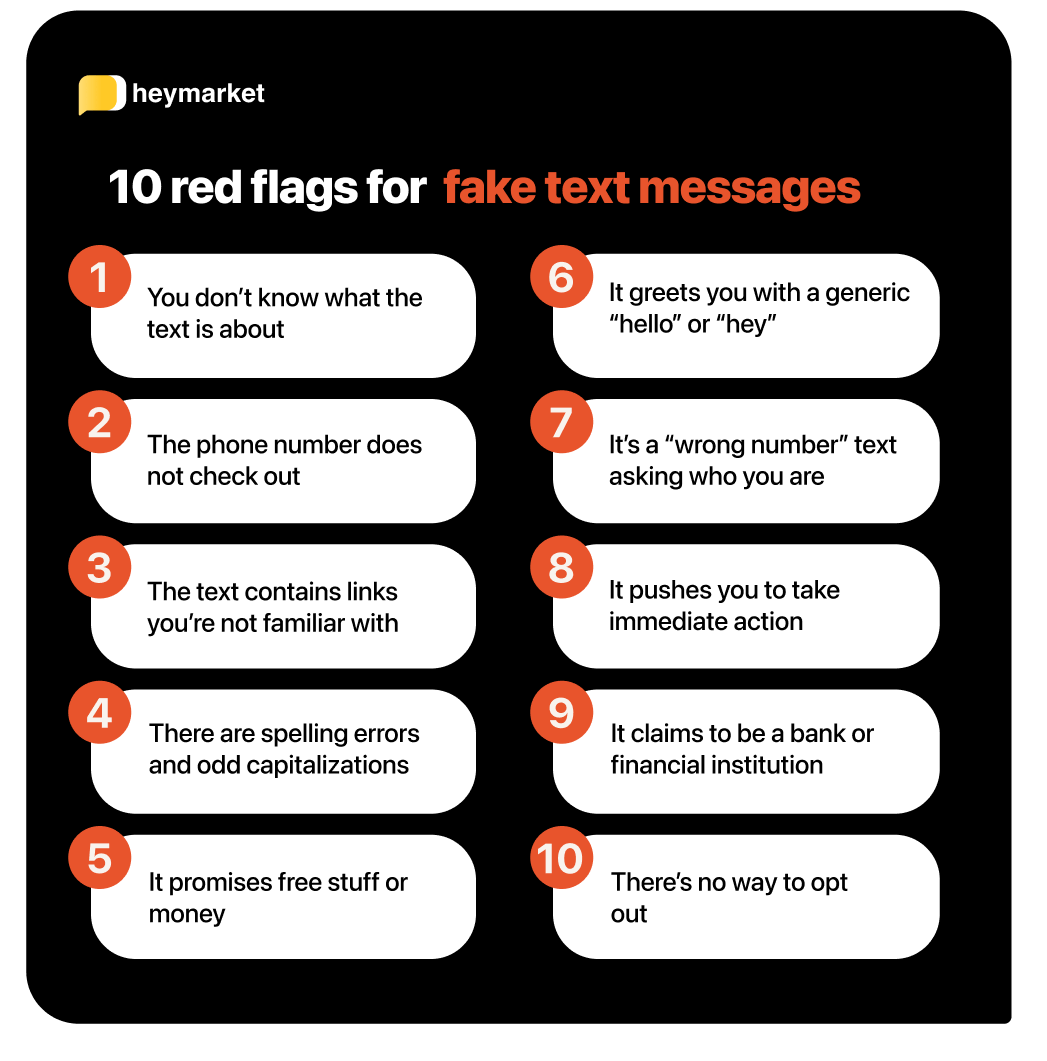
1. You don’t know the brand or what the text is about
Scammers sometimes send messages that mimic a legitimate company, like Amazon, but not always. Sometimes they won’t mention a brand name at all. It’s a red flag if you don’t know the brand, haven’t interacted with the brand, or see no mention of a brand. In that case, you’ve definitely received a fake company text message.
Plus, if you don’t know what the text is even talking about, chances are it’s suspicious. If you aren’t expecting a package, that text saying “You have a package from UPS” is most likely false. The same goes for a text saying “Bill for payment – 1555448” or “we detected fraud on your account.”
2. The phone number does not check out on Google
Many businesses have websites dedicated to anti-text fraud. They will share the phone numbers they might use to text you. When you receive a message from a brand that you know, double check to see if that brand has a list of verified phone numbers. You can double check the company phone number by simply googling the company name and phone number. Don’t check by calling the phone number in the message or respond to the text; that signals to scammers that your number is active.
3. It contains links you didn’t request
Fake texts often feature links that attempt to pressure you to click on them. These more often than not will take you to a suspicious website. If it seems to belong to a real brand, Google the official website in question and compare. Even then, fake messages often do a good job of making the site look official. The safest bet is to never click on links in text messages unless you directly requested or expected to receive that information.
4. There are spelling errors or odd capitalization
Fake texts are getting more sophisticated, but for now, they are often riddled with misspellings or grammatical errors. They might also feature odd capitalizations. If a text has more than one of these problems, it’s probably fake.
5. It promises free stuff or money
If it seems too good to be true, it probably is. When you get messages about $500 gift cards or free trips to the Bahamas, don’t book your tickets right away. Check the above issues and, more likely than not, you’ll find that a scammer was trying to take advantage of your excitement.
6. It leads with generic “hellos” or “heys”
If a text greets you without using your name, that’s an immediate red flag that the message sender does not know who they’re texting.
7. It’s a “wrong number” text
Spammers may pretend to be someone who has your number on their phone but doesn’t know who it belongs to. Even if they’re kindly asking you to confirm your name, don’t respond unless you recognize their number. If they’re a legitimate contact and need to get a hold of you, they probably would have saved your name in their phone (or should give you more information).
8. It pressures you to take action NOW
If a text urgently asks you to do something immediately, like click a link or respond to them, it’s suspicious activity.
9. It claims to be from a bank or your financial institution
Scammers often try to impersonate financial institutions, like the IRS or a bank, in an attempt to get people’s personal information. While your bank may send legitimate texts, they’re often about simple account updates and don’t require you to click links or take actions within the text message. If the text is asking you to do anything, examine it carefully and don’t click any links or respond. Instead, go directly to your bank’s secure website to verify the information.
If the information appears urgent or important, remember that these organizations often explicitly state that they will contact you by other means than texting.
10. There’s no way to opt out
Companies that text are required by law to ensure they’re texting the right person, and to only text people who have opted into receiving that information. They’re also required to make it easy to opt out of text messages. If they’re a legitimate business texting for a verified reason, chances are they’re taking these requirements seriously.
If the text doesn’t include opt-out instructions like “Text STOP to stop receiving text messages,” or “Reply QUIT to opt out,” that can signify it’s not from a real company.
Real Fake Text Examples
There are a lot of different kinds of text message scams out there. Each one uses unique tactics to get you to respond via text, call or click on the link in the message body. So what do fake text messages look like? We asked our friends to send us real spam texts they’ve received recently. Here are some real fake text examples you may mysteriously receive.
Fake Account Alerts or Fake Subscription Texts
Plenty of businesses offer SMS account alerts to keep customers up to date on their orders or account updates. But take scary account alerts with a grain of salt, and remember to head directly to the brand’s official website to verify instead of clicking a link.
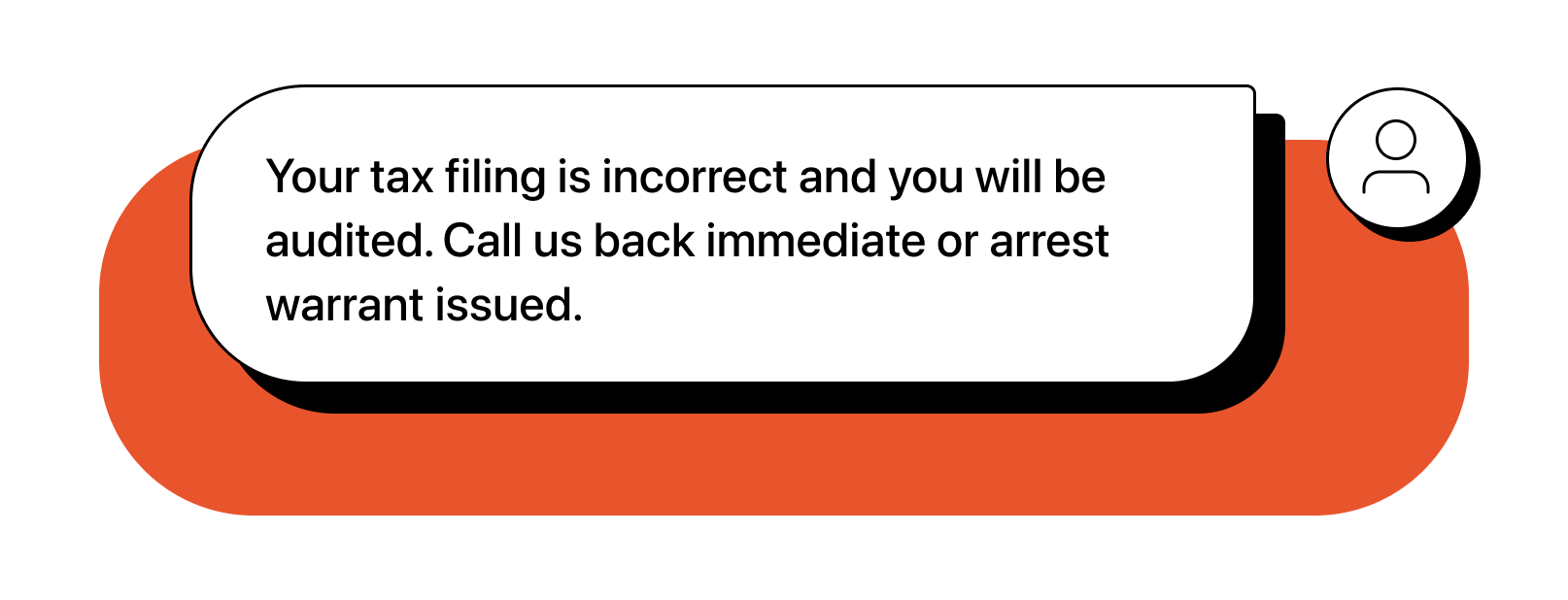
[JP MORGAN] Your credit card has been blocked. Verify your phone number here >> http://jpmorganjk.com/TRICKY2343
IRS ALERT: Your tax filing is incorrect and you will be audited. Call us back immediate or arrest warrant issued.
Thanks for paying your November ATT bill! If mistake, verify account here >> www.wrongnumber.com/whoops
Fake Award Texts
You probably didn’t win an award or sweepstakes if you never signed up for one. Treat any gift card or other celebratory message with a healthy amount of distrust.
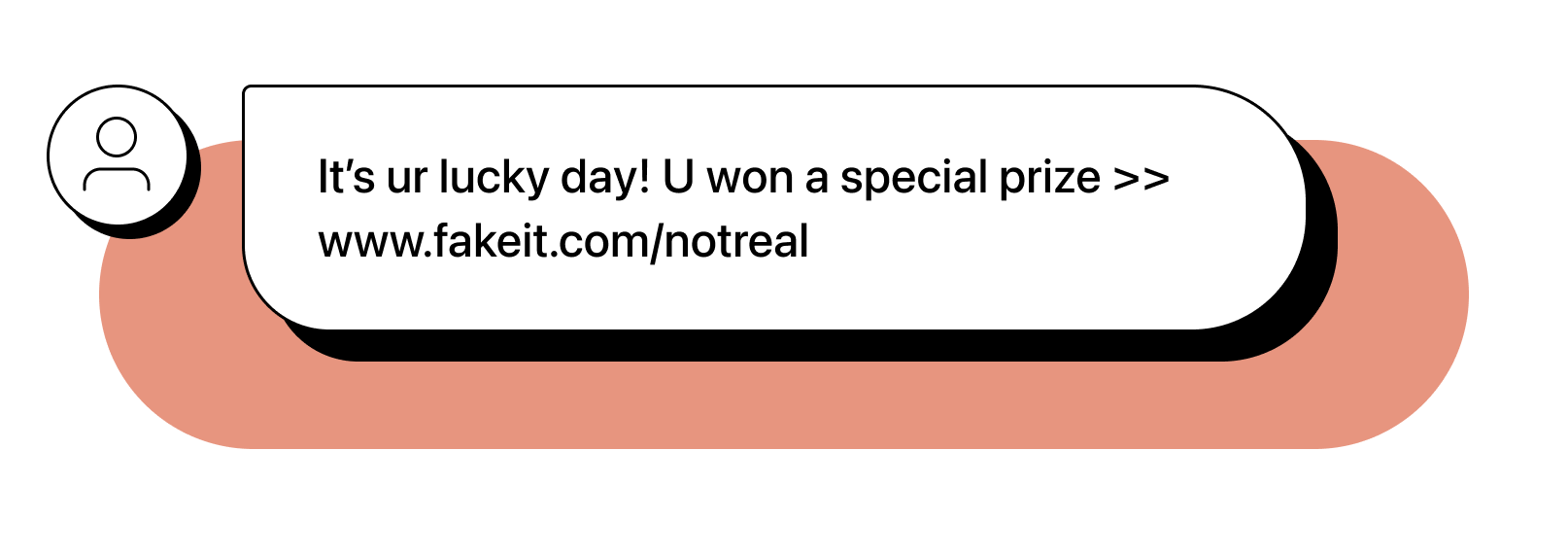
You’ve won! Go to bit.ly/winnerwinner to claim your $250 Amazon gift card.
***WINNER*** U r all set for the Bahamas! Check out your all-inclusive vacation details here >> www.bahamanebrasks.com/3SKIBN
It’s ur lucky day! U won a special prize >> www.fakeit.com/notreal
Fake Confirmation Texts
Legitimate companies do sometimes send automatic text messages like confirmation texts. These are usually helpful—unless they’re confirming things you never did at all. If you didn’t actually do the thing that the text is confirming, immediately contact the institution in question.
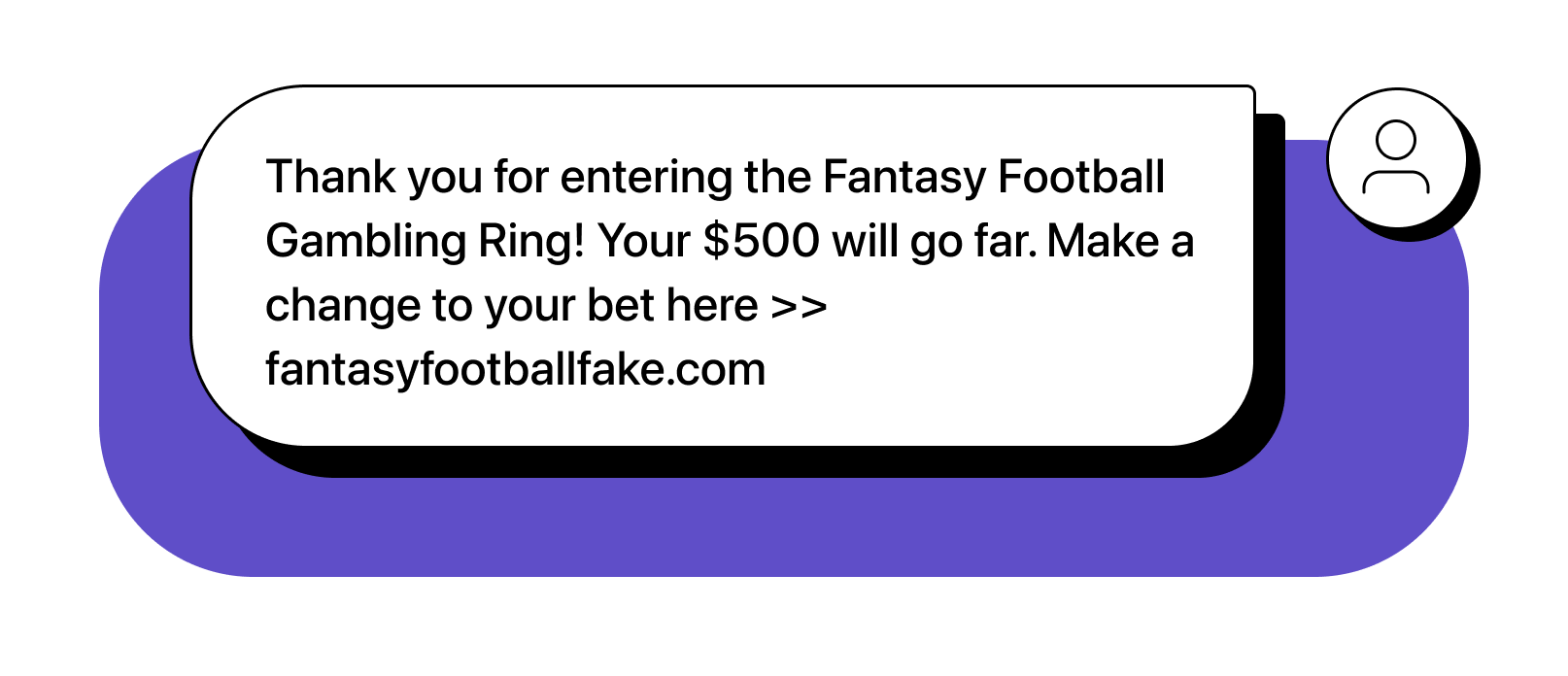
Customer, Trusted Bank is closing your bank account as per your request. Please keep this for your records or confirm your PIN at nottrustedbank.com/EIJEM33 to cancel.
Order Confirmation #23584U74. Plz login to your account here if this is incorrect >> amazon.com/notreal/EFJNV253
Thank you for entering the Fantasy Football Gambling Ring! Your $500 will go far. Make a change to your bet here >> fantasyfootballfake.com
Fake Wrong Number Texts
Fake texts from people who say they have the wrong number are growing more common. In 2022, they became especially popular. Scammers use them to confirm that your number is real, get information from you, and even form a relationship with you. Pay special attention to whether the details in this message line up with your details. If they’re mentioning something you don’t have or a place you don’t live—or didn’t get your name right at all—it’s probably a fake text.
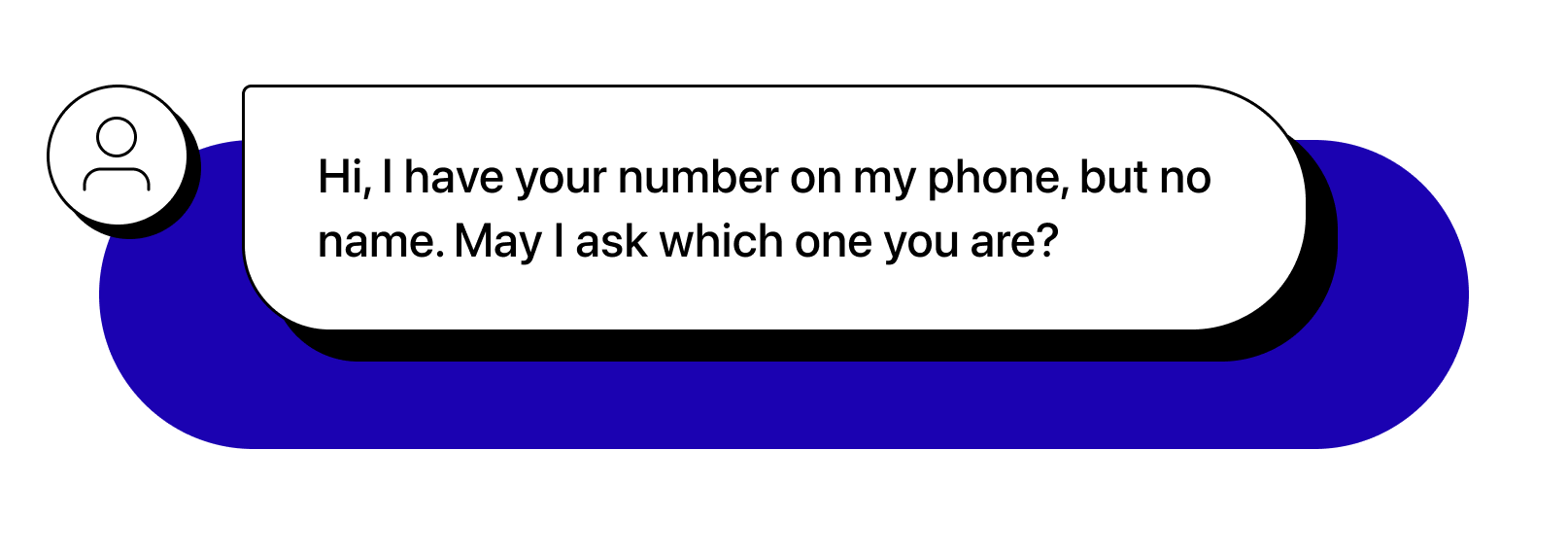
Tom can you give me a call?
Geraldine, I’m interested in purchasing your Honda Civic. Are you interested in making a sale?
Hi, I have your number on my phone, but no name. May I ask which one you are?
Steps to Block Fake Text Messages
Now that you know how to identify a fake text message, it’s time to learn how to stop them. Once you’ve decided a text is fake, you can:
- Use your phone’s built-in blocking tools
- Add your number to the FCC’s Do Not Call registry
- Use your cell carrier’s blocking tools
- Purchase a text-blocking app from a third party
- Report spam text messages to your carrier
- Use a business SMS platform to block individual senders
Once you complete some or all of these actions, consider deleting the fake text so you won’t mistakenly respond or click the included link.
Conclusion: Don’t Get Smished
While there are plenty of options for blocking fake texts, understand that there are a lot of scammers out there. If you stop one number from messaging you, you still might find another fake message coming your way.
Even so, learning how to identify a fake text message and block the number sending it is the best way to prevent yourself from falling for texting scams—or, in industry terms, getting smished.




